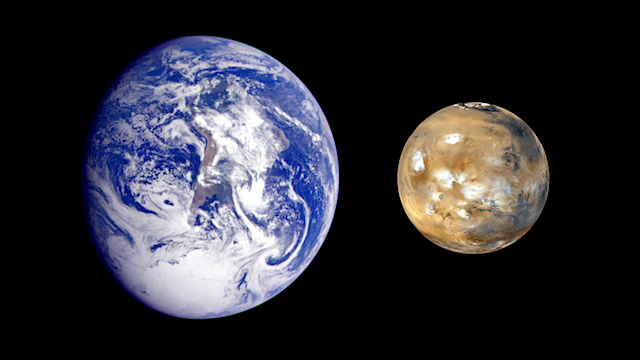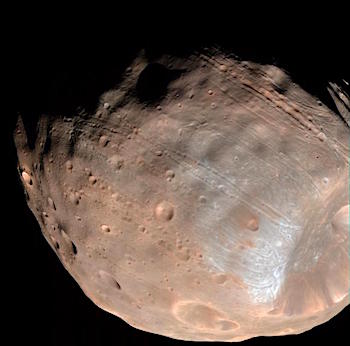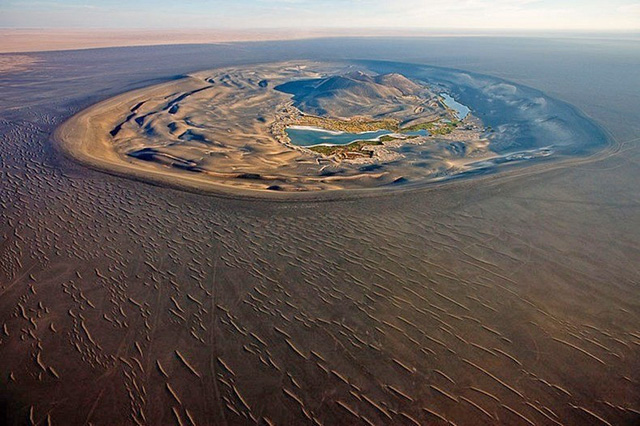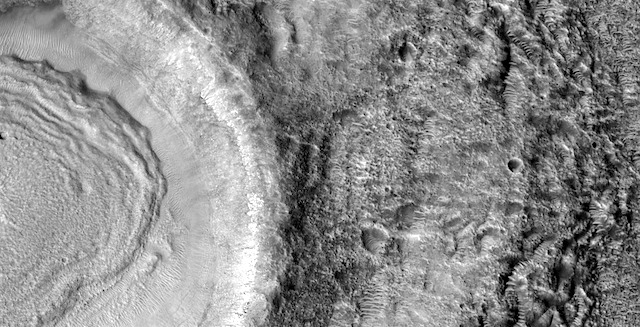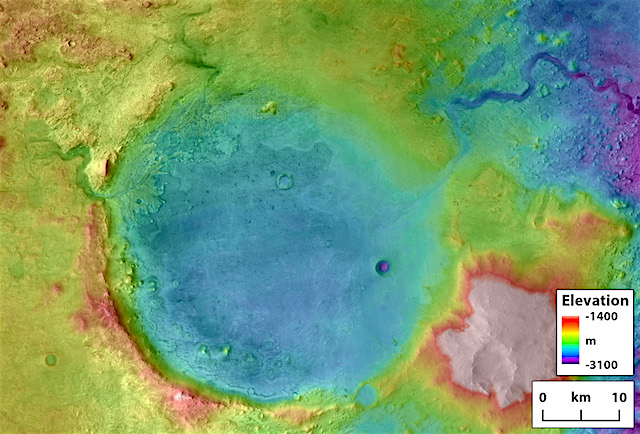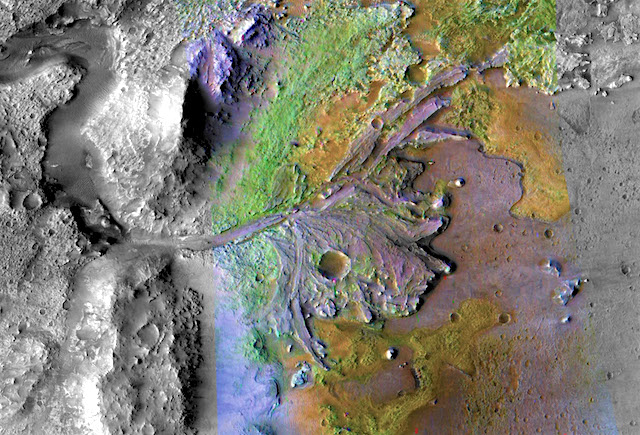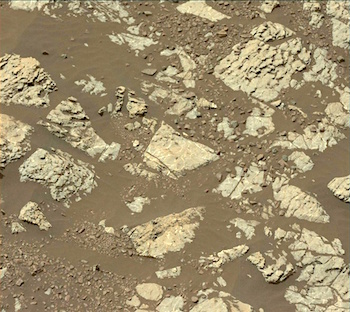 Sol 2236-39, November 19, 2018, update by MSL scientist Fred Calef: Curiosity is planning a smorgasbord of science over the next few days as it awaits results from digesting the “Highfield” drill target material. We’ll continue change detection observations including subdiurnal (i.e. several times a martian day) Mastcam observations of “Sand Loch” and “Windyedge”, as well as MARDI to watch moving sand grains beneath the rover, throughout the planning cycle. There’s also a good helping of Mastcam sky column, Navcam sky flats, crater rim extinction, and suprahorizon and zenith movies to round out the meal of atmospheric events. Repeating observations during the day of the same locations are one of the unique ways the rover can provide an hourly view of Mars’ surface that only a spacecraft on the ground can… [More at link]
Sol 2236-39, November 19, 2018, update by MSL scientist Fred Calef: Curiosity is planning a smorgasbord of science over the next few days as it awaits results from digesting the “Highfield” drill target material. We’ll continue change detection observations including subdiurnal (i.e. several times a martian day) Mastcam observations of “Sand Loch” and “Windyedge”, as well as MARDI to watch moving sand grains beneath the rover, throughout the planning cycle. There’s also a good helping of Mastcam sky column, Navcam sky flats, crater rim extinction, and suprahorizon and zenith movies to round out the meal of atmospheric events. Repeating observations during the day of the same locations are one of the unique ways the rover can provide an hourly view of Mars’ surface that only a spacecraft on the ground can… [More at link]
-
Recent Posts
Archives
Links
general
mission instruments
- CRISM: Compact Reconnaissance Imaging Spectrometer for Mars
- CTX: Context Camera
- HiRISE: High Resolution Imaging Science Experiment
- MARSIS: Mars Advanced Radar for Subsurface and Ionosphere Sounding
- SHARAD: Shallow Radar
- THEMIS: Thermal Emission Imaging System
missions
- All Mars missions list
- Curiosity rover
- ExoMars
- Hope (al-Amal) orbiter
- InSight
- Mars Atmosphere and Volatile Evolution Mission (MAVEN)
- Mars Exploration Rovers (MER)
- Mars Express (MEX)
- Mars Odyssey
- Mars Orbiter Mission (MOM) / Mangalyaan
- Mars Reconnaissance Orbiter (MRO)
- Mars Science Laboratory (MSL)
- Perseverance Rover
- Tianwen-1 orbiter/rover
news









